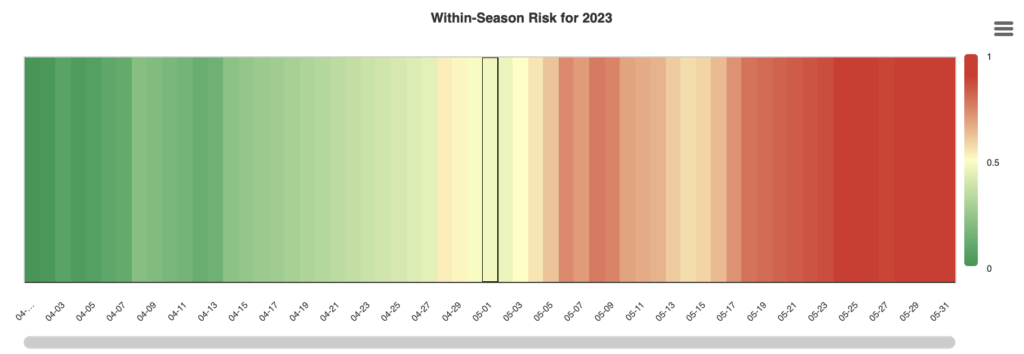How to Nail 2023 Thrips Management (Reisig, Huseth)
go.ncsu.edu/readext?933139
en Español / em Português
El inglés es el idioma de control de esta página. En la medida en que haya algún conflicto entre la traducción al inglés y la traducción, el inglés prevalece.
Al hacer clic en el enlace de traducción se activa un servicio de traducción gratuito para convertir la página al español. Al igual que con cualquier traducción por Internet, la conversión no es sensible al contexto y puede que no traduzca el texto en su significado original. NC State Extension no garantiza la exactitud del texto traducido. Por favor, tenga en cuenta que algunas aplicaciones y/o servicios pueden no funcionar como se espera cuando se traducen.
Português
Inglês é o idioma de controle desta página. Na medida que haja algum conflito entre o texto original em Inglês e a tradução, o Inglês prevalece.
Ao clicar no link de tradução, um serviço gratuito de tradução será ativado para converter a página para o Português. Como em qualquer tradução pela internet, a conversão não é sensivel ao contexto e pode não ocorrer a tradução para o significado orginal. O serviço de Extensão da Carolina do Norte (NC State Extension) não garante a exatidão do texto traduzido. Por favor, observe que algumas funções ou serviços podem não funcionar como esperado após a tradução.
English
English is the controlling language of this page. To the extent there is any conflict between the English text and the translation, English controls.
Clicking on the translation link activates a free translation service to convert the page to Spanish. As with any Internet translation, the conversion is not context-sensitive and may not translate the text to its original meaning. NC State Extension does not guarantee the accuracy of the translated text. Please note that some applications and/or services may not function as expected when translated.
Collapse ▲With planters rolling soon, we urge growers to think about thrips management now. The best source of information for thrips activity is the Thrips Infestation Predictor. This online tool forecasts risk for thrips damage. Based on which planting dates are at greatest risk, it can help growers know where to aggressively use in-furrow or foliar insecticides and where to hold back, as well as where they might want to start scouting first on the farm.
Growers should check this tool now to get a feeling for thrips pressure for a given location and planting date. Also, since it’s based on local weather forecasts, the tool’s accuracy improves closer to planting. So growers should check it just prior to planting, as well as after planting. We also want to demonstrate why it’s so important for growers to check the tool for their farm. Here is the risk forecast for planting cotton near Roanoke Rapids (model run 4-28-23):
However, the model we ran for Red Springs was very different.
This highlights the fact that predictions for locations can vary, depending on the year. Also, this forecast is based on expected weather, which we all know can rapidly change. Based on the forecast on 4-28-23, cotton planted at the beginning of May is at less risk for thrips injury than cotton planted in the middle of May (green = lower risk, red = higher risk) at Roanoke Rapids, but nearly the opposite at Red Springs. Growers planting in higher-risk conditions may want to consider an in-furrow insecticide overtop their seed treatment. In contrast growers planting in lower-risk conditions could consider using a seed treatment alone. In addition to driving resistance and hurting the wallet, unneeded insecticides can sometimes cause other problems later in the season like aphids and spider mites. After emergence, all growers should scout all fields and be prepared to spray based on established thresholds (two immatures per seedling). We suggest scouting the fields at highest estimated risk first. Note that insecticide sprays for thrips typically work best when you can peel back the cotyledon and see the first true leaf poking out. After several true leaves have expanded, thrips sprays have diminishing benefit.
This article provides a good overview of how seed treatments, environmental conditions, and thrips populations interact in relation to efficacy. Note that acephate (Orthene) resistance has been documented in the Midsouth. One population of thrips sprayed with Orthene during 2022 in North Carolina was tested and can be categorized as “reduced susceptibility”. Therefore, growers should use acephate with caution this year and check behind sprays.




